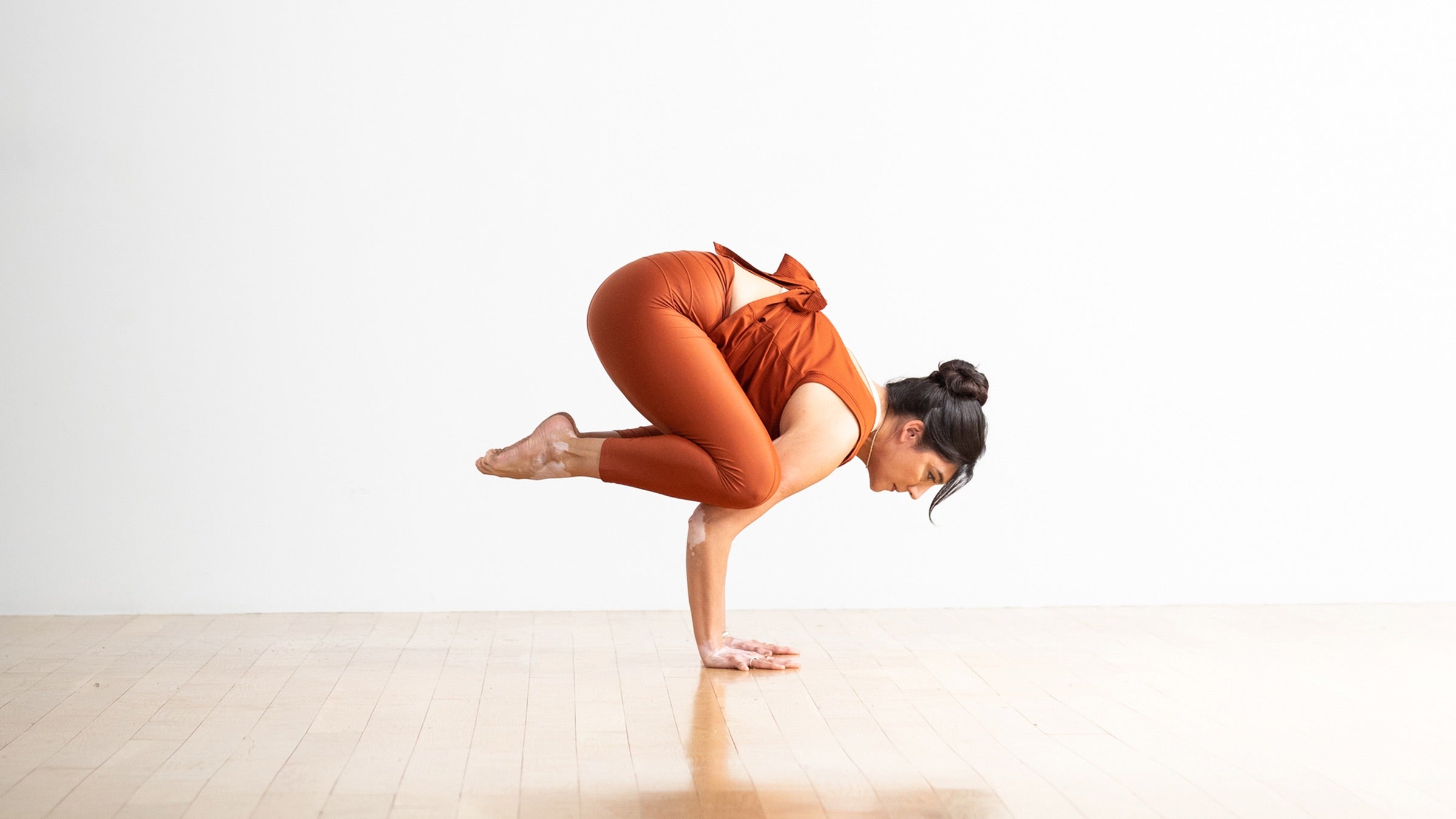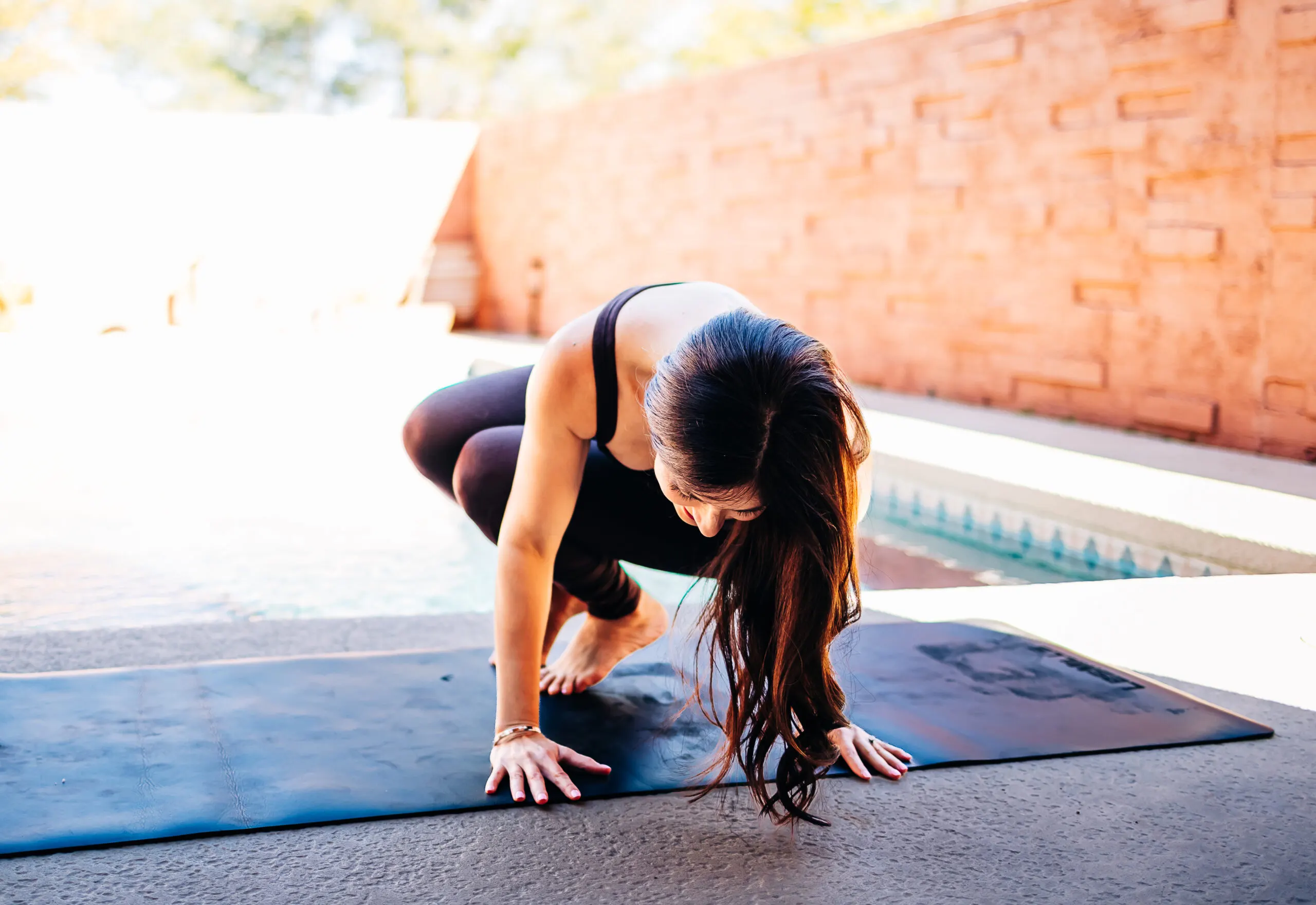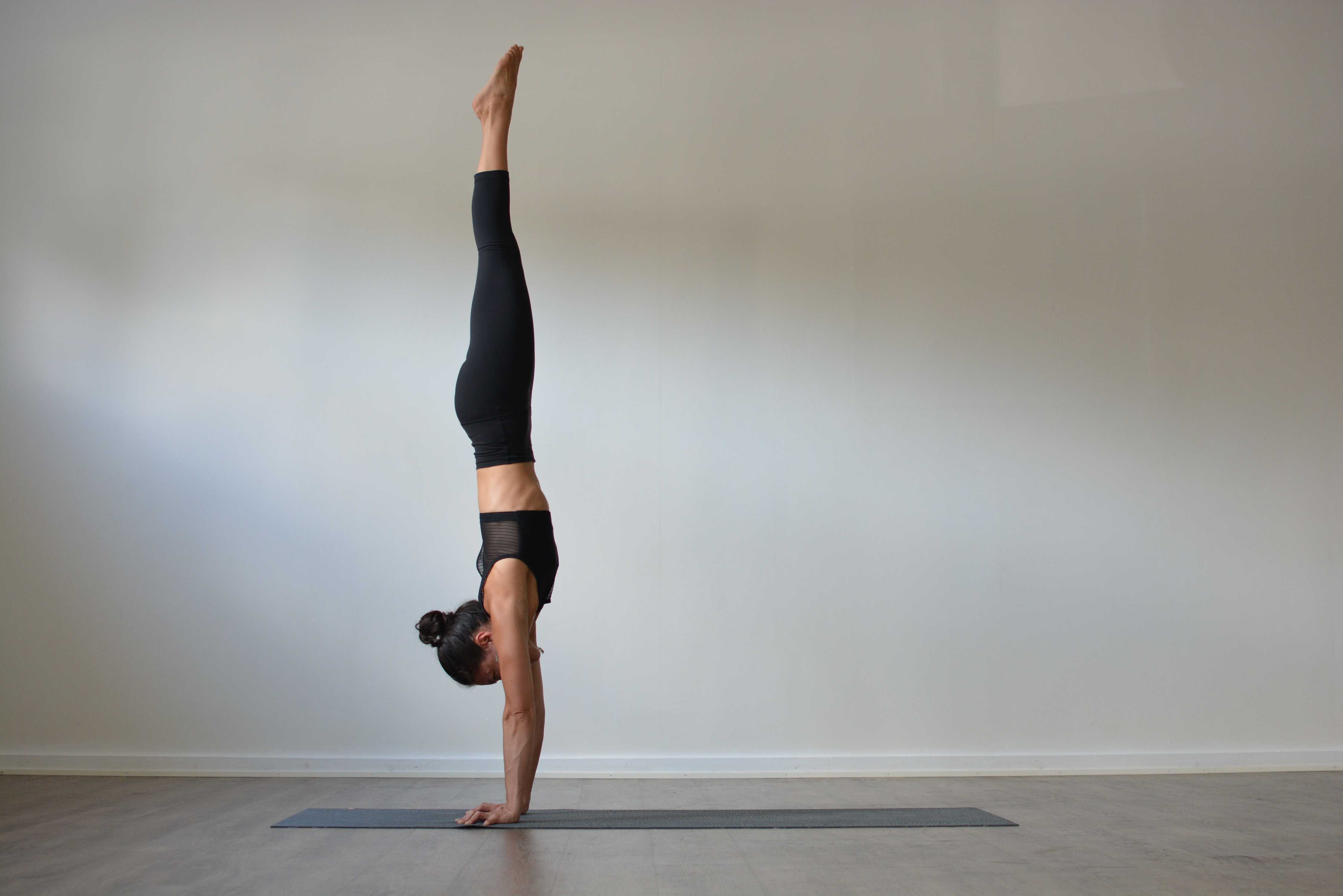INTRODUCTION:
Embarking on a journey to strengthen your core can transform not only your physical strength but also your mental and emotional resilience. Yoga arm balances are a powerful way to achieve this transformation. These poses not only build core strength but also improve balance, flexibility, and concentration. In this blog post, we will explore 11 arm balances that can significantly enhance your overall well-being, fusing health, wellness, and balance in your yoga practice.
There’s more to these positions than just arm strength. They strengthen your core, which increases power and stability.
In this guide, we’ll look at how arm balances help build stronger core muscles. We’ll also give you hints and methods to help you become proficient in these positions. Regardless of your level of experience, this guide will provide insightful advice to improve your yoga practice.
Yoga Arm Balances – An overview
Your arms support the majority of your body weight when you are arm-balanced. In these stances, your feet are often elevated above the ground.
These postures require a combination of strength, balance, and concentration. They work the muscular groups in your arms, shoulders, and core.
Contrary to popular belief, arm balances are for more than just skilled yoga practitioners. If you practice regularly and use the right technique, anyone can learn how to do these poses.
Understanding the key elements of arm balances and their benefits is the first step towards incorporating them into your yoga practice. In the following sections, we’ll go into more detail about how these poses strengthen your core.
The Fundamental Connection:
How Arm Balances Develop Strength.
One of the best ways to improve your core is through arm balances. You must tighten your abdominal muscles to maintain your stability and balance.
In addition to your stomach muscles, arm balances work your lower back, hips, and pelvic muscles. This deep engagement aids in the formation of a strong core.
Key benefits of having a strong core:
- improved balance and stability, and less risk of injury.
- improved performance in physical activities.
By including arm balances in your yoga practice, you can reap all of these benefits and more.
Essential exercises for arm balances.
Warm-Up for Arm Balance: Key Exercises
It’s crucial to have your body ready before trying arm balancing. This means strengthening key muscle groups and becoming more flexible.
A plank stance is an excellent place to start. Arm balances require strong shoulders, arms, and core, all of which are strengthened by them.
Another good exercise is the boat position.
Through the concentration of the abdominal muscles, this pose strengthens and stabilises the core.
Remember that being consistent is crucial.
Regularly practising these exercises will gradually build the strength needed for arm balance.
Easy Arm Balances for Beginners:
Start with Trace. It’s time to work on some arm balances now that you have developed some foundational strength. You may be confident that we will start with positions suitable for beginners.
- Cow Pose is a Starting Point for entering into Arm Balances
- Next, Astavakrasana, also known as the Eight-Angle Pose. This position is a little more challenging, but with enough practice, novices may still accomplish it.
It’s all about moving forward and enjoying yourself along the way. Let’s get going now!
11 Revolutionary Arm Balances for Experienced Instructors in Yoga
Your core strength, balance, and mental toughness will be tested and transformed as you work through these 11 arm balances. Every stance has its advantages and demands certain skills to achieve.
Enjoy the and have patience to achieve your health and well-being.
(Bakasana) Pose in Crow
 The Crow Pose is one of the best ways to introduce arm balances. It strengthens your wrists and teaches you how to use your core.
The Crow Pose is one of the best ways to introduce arm balances. It strengthens your wrists and teaches you how to use your core.
Don’t worry if you can’t first lift your feet off the ground. You’ll be able to accomplish that with practice!
Advantages:
strengthens the abdomen, wrist, and arm muscles; enhances balance and focus
Step-by-step instructions:
1. Begin by squatting with your hands on the ground and your feet together.
2. Place your knees on the backs of your upper arms and bend your elbows.
3. Take a step forward and shift your weight to your hands.
4. Raise your feet off the floor and maintain your hand balance.
5. Take a few deep breaths, then let go.
Advice:
To stay balanced, focus your eyes forward and contract your core muscles.
Side Crow Pose (Parsva Bakasana):

Benefits of Side Crow Pose (Parsva Bakasana):
It increases flexibility and balance and strengthens the arms, shoulders, and core.
Step-by-step instructions:
1. Start with your feet close together in a crouching position.
2. Rotate your body to the right and spread your hands shoulder-width apart on the ground.
3. Rest your right hip on your right upper arm while bending your elbows.
4. To maintain your balance, lean forward and raise your feet off the ground.
5. Hold the position for a few breaths, then release and switch to the other side.
Advice:
Make sure your body stays straight and engages your core muscles.
Astavakrasana – Pose with Eight Angles
Moving up from the Crow Pose, there is the Eight-Angle Pose. It is a great challenge, but it does demand more flexibility and core strength
Benefits:
Strengthens the arms, wrists, and core; improves balance and flexibility.
Step-by-Step Guide:
1. Start in a seated position with your legs extended.
2. Bend your right knee and place your right foot on the floor next to your left thigh.
3. Twist your torso to the right and place your hands on the floor, shoulder-width apart.
4. Lift your left leg and hook your right foot over your left thigh.
5. Lean forward and lift your feet off the ground, balancing on your hands.
6. Sustain the position for several breaths, then release and mirror the movement on the other side.
Tips:
Remind yourself to breathe and move slowly. You’ll get skilled at this stance as well with patience and time.
Handstand (Adho Mukha Vrksasana)

The Handstand, or Adho Mukha Vrksasana, is a classic arm balance. It requires strength, balance, and a bit of courage.
Benefits:
Strengthens the arms, shoulders, and core; improves balance and concentration.
Step-by-Step Guide:
1. Start in a downward-facing dog position with your hands shoulder-width apart.
2. Walk your feet towards your hands, lifting one leg at a time.
3. Shift your weight onto your hands and kick your legs up towards the ceiling.
4. Balance on your hands and hold for a few breaths.
Tips:
Keep your core engaged and gaze focused on a fixed point.
Firefly Pose (Tittibhasana)
The Firefly Pose, or Tittibhasana, is another advanced arm balance. It requires flexibility, core strength, and a sense of playfulness.
Benefits:
Strengthens the arms, wrists, and core; stretches the hamstrings and groin.
Step-by-Step Guide:
1. 1. Begin in a squat stance with your feet slightly separated.
2. Place your hands on the floor, shoulder-width apart.
3. Bend your elbows and lift your feet off the ground, straightening your legs out to the sides.
4. Balance on your hands and hold for a few breaths.
Tips:
Keep your core engaged and legs active to maintain the pose.
Peacock Pose (Mayurasana)
Benefits:**
Strengthens the arms, wrists, and core; improves digestion and detoxification.
Step-by-Step Guide:**
1. Start in a kneeling position with your knees apart.
2. Place your hands on the floor, fingers pointing towards your feet.
3. Lean forward and place your elbows on your abdomen.
4. Straighten your legs behind you and lift your feet off the ground, balancing on your hands.
5. Maintain the position for a few breaths, then let go.
Tips:
Engage your core and keep your keep your body in a straight line.
Flying Pigeon Pose (Eka Pada Galavasana)
Benefits:**
Strengthens the arms, wrists, and core; stretches the hips and hamstrings.
Step-by-Step Guide:**
1. Start in a standing position with your feet together.
2. Bend your right knee and place your right ankle on your left thigh.
3. Bend your left knee and place your hands on the floor, shoulder-width apart.
4. Lean forward and lift your left foot off the ground, balancing on your hands.
5. Hold for a few breaths, then release and repeat on the other side.
Tips:**
Engage your core and focus on your breath to maintain balance.
Forearm Stand (Pincha Mayurasana)
Benefits:**
Strengthens the arms, shoulders, and core; improves balance and flexibility
.
Step-by-Step Guide:**
1. Start in a dolphin pose with your forearms on the floor, shoulder-width apart.
2. Walk your feet towards your elbows, lifting one leg at a time.
3. Shift your weight onto your forearms and kick your legs up towards the ceiling.
4. Balance on your forearms and hold for a few breaths.
Tips:
Engage your core and keep your body in a straight line.
Side Plank Pose (Vasisthasana)
**Benefits:**
Strengthens the arms, wrists, and core; improves balance and stability.
**Step-by-Step Guide:**
1. Start in a plank position with your hands shoulder-width apart.
2. Shift your weight onto your right hand and stack your left foot on top of your right foot.
3. Lift your left arm towards the ceiling and hold for a few breaths.
4. Release and repeat on the other side.
**Tips:**
Engage your core and keep your body in a straight line.
Dragonfly Pose (Maksikanagasana)
**Benefits:**
Strengthens the arms, wrists
, and core; improves balance and flexibility.
**Step-by-Step Guide:**
1. Start in a seated position with your legs extended.
2. Bend your right knee and place your right foot on the floor next to your left thigh.
3. Twist your torso to the right and place your hands on the floor, shoulder-width apart.
4. Lift your left leg and hook your right foot over your left thigh.
5. Lean forward and lift your feet off the ground, balancing on your hands.
6. Hold for a few breaths, then release and repeat on the other side.
**Tips:**
Keep your core engaged and maintain a steady gaze.
Scorpion Pose (Vrschikasana)
**Benefits:**
Strengthens the arms, shoulders, and core; improves balance and flexibility.
**Step-by-Step Guide:**
1. Start in a forearm stand with your forearms on the floor, shoulder-width apart.
2. Shift your weight onto your forearms and kick your legs up towards the ceiling.
3. Bend your knees and lower your feet towards your head.
4. Balance on your forearms and hold for a few breaths
**Tips:**
Engage your core and keep your body in a straight line.
Safety and Alignment: Tips to Avoid Injury
Practicing arm balances can be a lot of fun. But it’s important to prioritize safety and alignment to avoid injury.
Always warm up before you start practicing arm balances. This helps to prepare your muscles and joints for the poses.
Pay attention to your alignment. Make sure your wrists, elbows, and shoulders are stacked in poses like Crow Pose and Handstand.
Listen to your body. If a pose causes pain or discomfort, ease out of it. Remember, yoga is about self-care, not self-harm.
The Five Benefits of Arm Balances
Tone and Lift the Entire Body
– Flying requires using the entire body, not just the arms.
– A powerful back, knees, and core assist in lifting and guard against strain and injury to the arms and wrists.
– Lift and tone are improved by using the bandhas (internal energy locks).
– Achieving and maintaining flight becomes easier and more pleasurable when the entire body cooperates.
Build Up Your Body to Guard Your Shoulder Joints
The upper body is not fully utilised by people who lead sedentary lives.
Arm balances strengthen the upper body to counteract this.
– In comparison to hip joints, shoulder joints are less stable yet far more flexible.
When performing arm balances, the shoulder joints are shielded from harm by proper body engagement.
- Stabilise the Soul, Mind, and Body
Physical balance is naturally challenged by arm balance.
It takes body awareness, concentrated attention, and a commitment to attempt to achieve balance.
Maintaining lift concentrates the mind on the here and now.
The soul can feel light and free when mindfulness is practiced and intention is fostered.
Increase Prana Flow
Breath is how the life energy, or prana, links the body and mind.
Pranayama expands upon this vital energy.
Breathwork, along with arm balances, improves prana flow.
This rejuvenates the body, lowers the rate of ageing, and improves blood supply to the brain.
Promote a positive sense of self-worth, self-confidence, and self-esteem.
